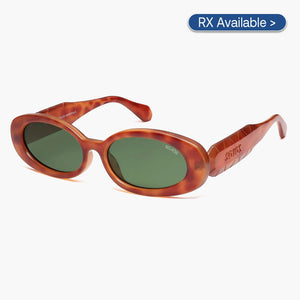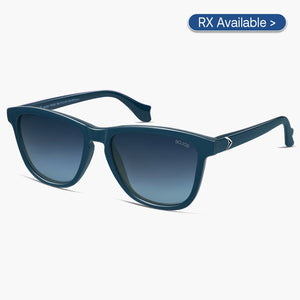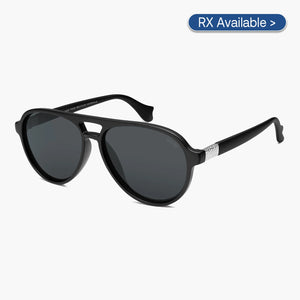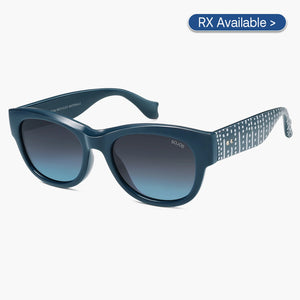An Understanding Of Lenses
Distance (Single-Vision)
This lens helps you see things far away. It is usually indicated by a (-) next to the numbers under the Sphere/SPH category of your prescription.
Reading (Near-Vision)
This lens helps you see things up close. The most common use is for reading. It is usually indicated by a (+) next to the numbers under the Sphere/SPH category of your prescription.
Progressive (Reading & Distance)
Progressive Lenses are a type of multi-focal lens specifically for people who need corrective lenses to see distant and close-up objects. To put it plainly, these lenses allow you to see clearly at multiple distances without a bifocal line.
Indexes Of Refraction
The index of refraction is defined as the quotient of the speed of light as it passes through two media. The slower the light travels in a substance, the higher its index of refraction. Higher indexes allow light to bend the same amount in a thinner material as compared to lower indexes. That is why, when having higher prescriptions, you'd better have higher index lenses.

Lens Coatings and Treatments
Anti-Reflective Coating
Typically applied on both sides of an eyeglass lens, this coating is also known as AR or anti-glare. It means you can get the maximum light from the environment without any visual interference. AR coating is highly recommended for all eyeglass lenses, but especially for polycarbonate, high-index and aspheric lenses, which all reflect more light than regular lenses.

Scratch-Resistant Coating
This coating will make your glasses less vulnerable to scratching if you drop them or clean them with an abrasive cloth.

UV Coating
Exposure to ultraviolet rays can lead to vision problems like cataracts and retinal damage. But many eyeglass lenses have a substantial amount of UV protection built in. You can also sometimes buy an additional treatment to safeguard your eyes fully or opt for lenses with 100 percent protection.

Photochromic lenses or transitional lenses darken automatically in response to sunlight and return to clear when indoors. Photochromic lenses are available in virtually all lens materials and designs and can work for people who cannot afford a separate pair of prescription sunglasses or who have light sensitivity.

Anti-fog Coating
Have you experienced having your glasses fog up when you come in from outside in cold weather? Even if you are not live in a cold climate, your lenses may fog up during sports activities or when you are hot and perspiring. The anti-fog coating is to eliminate the condensation of moisture on lenses that cause fogging.

Tinted Lenses
Lens tinting can aid vision or add some cosmetic style to your glasses. A yellow tint may increase contrast and a gray tint may not alter color perception with sunglasses. Cosmetic tints come in a variety of colors, shades, and gradations. Recently, there has been a lot of press on Computer Vision Syndrome, CVS. Did you know that a special tint for your glasses can reduce eyestrain associated with CVS?

FAQ
1.Can I get multiple coatings on glasses?
Yes, it is possible to have multi-coated lenses corporate a combination of coatings. The combination can improve the properties of your spectacles.
2.Do I have to get progressive glasses if there’s ADD in my prescription?
You should get progressive lenses if you have presbyopia. Many adults with presbyopia turn to progressive lenses for the best vision correction without lines. And if you have presbyopia and astigmatism, progressive lenses can be an effective treatment method.





